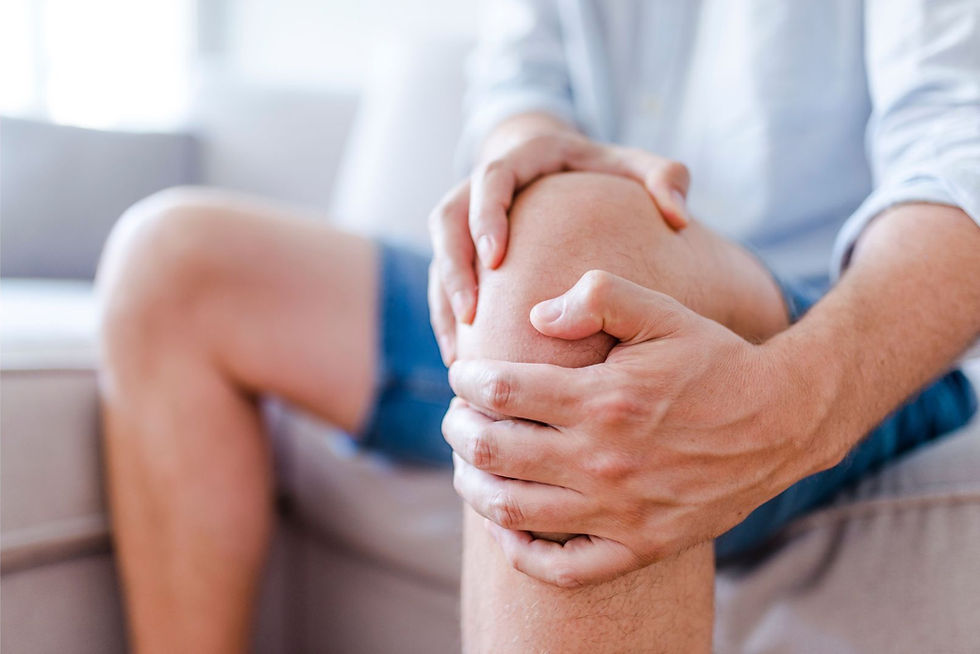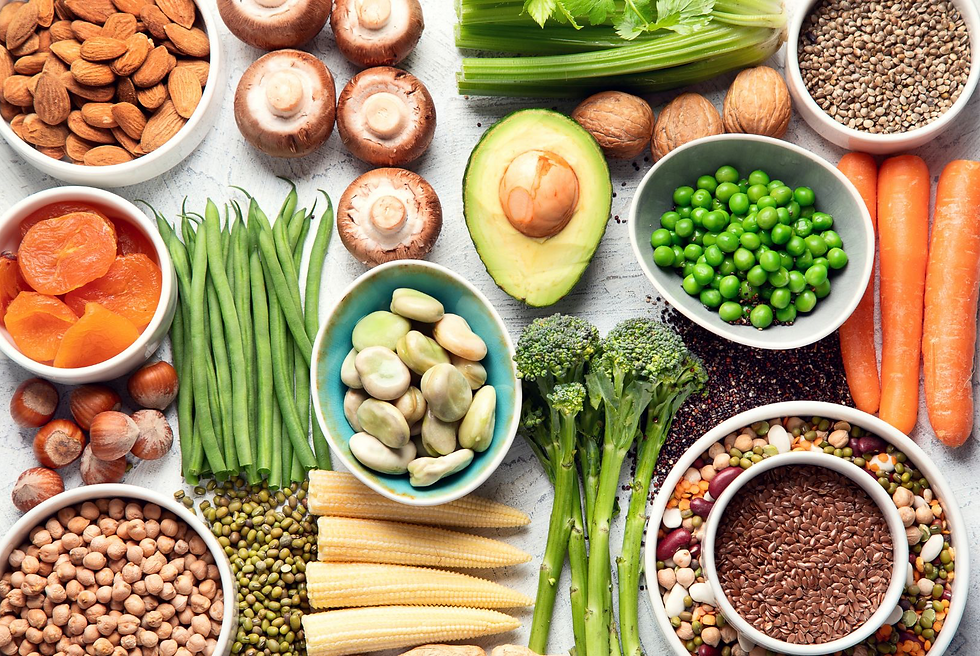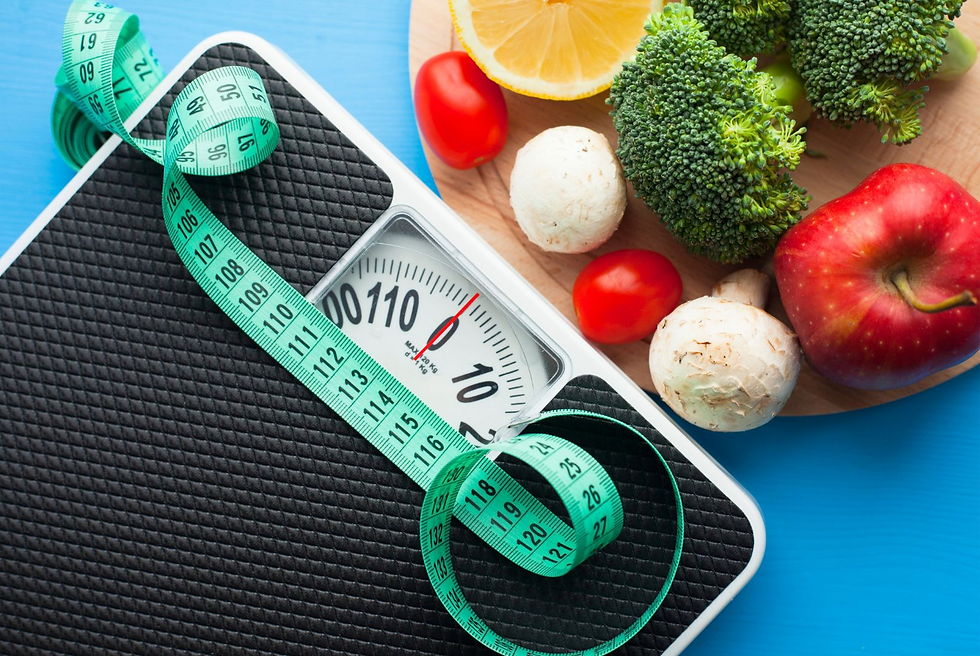Pain Management for Arthritis
- ahwcweb
- Sep 11, 2024
- 4 min read

Are you looking to lower your arthritic pain? In our Start a New YOU!® Program, we address the Ten Essentials for lowering pain from all forms of arthritis. This blog will explain why a whole-food, plant-based diet without refined sugar and processed foods can help lower arthritic pain.
Lois Lane looked at Kent Clark as just another reporter until she discovered he was Superman. We often see plant foods as ordinary foods until we learn the secret of their superpower to reduce disease and pain; once we understand the power behind these Kick-Start Superfoods, they won’t be just ordinary foods anymore.
What are some of these superpowers of plants?
Plants in their whole form naturally contain anti-inflammatory properties, lots of healing nutrients, fiber, water, and are void of inflammatory and pain-triggering substances (except for those you are allergic to).
Let’s see how plant foods can reduce pain:

1. Anti-Inflammatory Properties:
Phytochemicals: Plants are rich in phytochemicals like flavonoids, carotenoids, and polyphenols, which have anti-inflammatory properties. "Phyto" means plants, and therefore, phytochemicals are found only in plants. These compounds can help reduce chronic inflammation, a key contributor to pain, especially in conditions like arthritis.
Antioxidants: Fruits, vegetables, and whole grains contain high levels of antioxidants that combat oxidative stress, another factor that can exacerbate pain.
2. Omega-3 Fatty Acids:
Certain plant foods, such as flaxseeds, chia seeds, walnuts, and green leafy vegetables are good sources of omega-3 fatty acids. Omega-3s have been shown to reduce inflammation and may help with pain management, particularly in conditions like rheumatoid arthritis.
3. Contain Fiber and Water:
Whole food, plant-based diets that include more fruits, vegetables, cooked whole grains, and legumes (beans, peas, lentils) naturally have a higher level of fiber and water. Fiber helps control inflammation by sending out a signal to the body, saying in essence, “Fiber on board! We have toxins, bacteria, and other sources that create inflammation under control so no need to create inflammation.” The abundant water in these same foods helps to hydrate the body and lubricate the joints. Eating plants is a win-win situation regarding pain reduction for arthritis.
4. Reduced Intake of Pain-Triggering Foods:
Saturated Fats and Processed Foods: A whole food, plant-based diet avoids or minimizes the intake of saturated fats and processed foods, which can contribute to inflammation and pain. Sources of saturated fats and processed foods would include:
Flesh foods and other animal products: These foods are associated with higher levels of inflammatory markers in the body due to their endotoxins and hypoxanthine. On average, 90% of their calories come from fat, with a high percentage of that being saturated fat. The exclusion of animal products (including all flesh, beef, chicken, fish, game, milk, eggs, cheese, etc.) in a plant-based diet leads to a reduction in pain.
Refined and Processed Carbohydrates: We have already mentioned the benefits of fiber in reducing pain. With refined and processed carbohydrates, such as white and unbleached flour, white rice, most boxed cereals, and other packaged and processed products- over 20 nutrients have been removed, along with fiber. Five and sometimes seven synthetic nutrients are added back, but no fiber. Basically, all that is left in refined carbohydrates is a gluey, starchy substance (called an endosperm) that still contains all the calories from carbohydrates, protein, and fat but is void of adequate nutrition to digest it and the fiber to push it through the intestinal tract and halt inflammation. Worse yet, the gluey, starchy substance sticks to the intestinal walls, matting down the intestinal villi (little hairlike projections all along the intestinal walls). The villi absorb 90% of our nutrients, but if they are matted down, minimal nutrients are absorbed even when nutritious food is eaten, and the poor body becomes overfed and undernourished, creating lots of cravings and sometimes an insatiable appetite due to a lack of nourishment. In a whole food, plant-based diet, there is a strong emphasis on eating whole grains and starches with all the nutrients intact.
4. Healthy Gut Microbiome:
A whole food, plant-based diet is high in fiber, which supports a healthy gut microbiome. The king of fiber is beans, providing eight or more grams of fiber per ½ cup when cooked. Beans also provide the body with fiber that create prebiotics, which create probiotics, which can then create postbiotics, making for a very healthy gut flora. A well-balanced gut flora can reduce inflammation and has been linked to lower pain levels, particularly in conditions like irritable bowel syndrome (IBS) and other inflammatory bowel diseases. A poor gut microbiome has been identified as a precursor or cause for various arthritis, including rheumatoid arthritis.

5. Weight Management:
Plant-based diets are often lower in calories and provide more nutrients, including fiber. Therefore, they help reduce cravings, snacking, and overeating and can help with weight management. Maintaining a healthy weight reduces the stress on joints and decreases the risk of chronic pain, especially in conditions like osteoarthritis.
6. Improved Blood Flow:
A whole-food, plant-based diet improves blood circulation, which helps deliver nutrients and oxygen to tissues more efficiently. This reduces pain associated with poor circulation, such as in peripheral artery disease and arthritis.
Overall, a plant-based diet is effective in lowering pain because it reduces inflammation, increases fiber and high-water content foods, avoids pain-triggering foods, and promotes overall health.
Are you ready to try it? Would you like help determining where to start for your particular situation?
If yes, schedule an appointment today to begin your journey to a new, healthier you!
Blue Skies,
Dana West, RDN, LD, DIPACLM

Commentaires